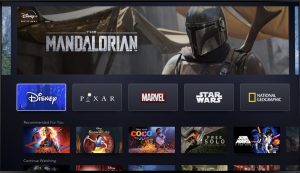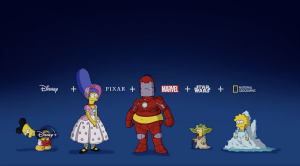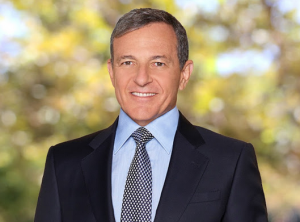TBI Weekly: How the Mouse House is winning with Disney+
Disney left it pretty late to get into the direct-to-consumer business considering the heft of its operations and that giant back catalogue.
But, as with many things the Mouse House does of late, it appears to have made an almost perfectly-timed entry that has been neatly illustrated in the company’s first quarterly results revealed since Disney+ launched.
The emergent headlines earlier this week screamed out that Disney+ has been an undoubted success to date. It hit 28.6 million subscribers in less than six months, something CEO Bob Iger put down to an “incredible portfolio of great brands, the outstanding content from our creative engines and a robust technology platform.”
Digging deeper into Iger’s comments and the results as a whole though, a clear strategy emerges of how the Mouse House is looking to make the most of its new streamer.
Using existing assets for global reach
 Disney+ might only be available in a handful of countries at present but there is little doubt that it will become a global behemoth with tentacles everywhere.
Disney+ might only be available in a handful of countries at present but there is little doubt that it will become a global behemoth with tentacles everywhere.
The company is already feeling bullish enough to have brought forward its launch in Western Europe, which will take place on 24 March, but there were intriguing details about how Disney+ might be taken to customers further afield too.
Iger confirmed reports from late last year that the service would be made available in India through its locally owned OTT service Hotstar from 29 March, with Hotstar VIP and Premium subscription tiers being rebranded as Disney+ Hotstar.
The Disney CEO added that he saw the deal, struck via its Star India operation, as “a great opportunity to use the proven platform of Hotstar to launch the new Disney+ service in one of the most populous countries and fastest-growing economies in the world.”
To illustrate just how great that reach is, last year the streamer revealed that it has around 300m monthly active users – largely bolstered by an aggressive bid for rights to cricket series, which are followed religiously in India and large parts of Asia. The hope is that Disney+ will help to stem the drop-off in viewership, which falls dramatically outside of the cricket season.
Profiting from partnerships
The Hotstar agreement, while within the Disney family, builds on similar deals that have been struck with third-party operators in countries such as France, where Canal+ has a partnership. And Iger was clear that other arrangements would also be sought with carriers to deliver further reach.
In terms of Europe, he said that the company is in talks “with several other potential distribution partners”. One of those is UK-based Sky, which is reportedly close to striking a deal that would significantly improve the visibility of the soon-to-launch SVOD. Reports claim that the multi-year partnership will allow Disney+ to become available on its pay TV platform Sky Q day-and-date with its wider British launch.
The deal would serve as something similar to Sky’s arrangement with Netflix, which was recently renewed. That partnership lets Sky integrate Netflix programming alongside its own original content and other on-demand content within the Sky Q user interface, with Netflix series such as The Crown and Stranger Things often promoted heavily.
For Sky, it provides a way to provide its customers with access to programming that it lost as a result of Disney’s decision to launch its own streaming service.
The cost of competition
Pricing of the service has been pretty comparable between countries launched into to date, but, again referring to India, Iger revealed that Disney could be flexible in how it approached the cost of its service to consumers.
The Mouse House CEO said that while the price in India is yet to be confirmed, there will be two tiers. A premium service will offer everything that Disney+ had to offer – meaning the giant back catalogue but also originals such as The Mandalorian – while a second would only offer library titles. It is unclear whether this approach may be rolled out elsewhere.
Meanwhile, the hyper-competitive pricing of Disney+ in the US – $6.99 per month or $69.99 per year – is not set to change anytime soon, Iger said, adding that adjustments were “not a priority of ours right now.”
But it looks likely this low benchmark will change – “we believed all along that we would have an opportunity to address pricing as we added more content, really original content, and the price-value relationship went up to the consumer,” the CEO subtly noted.
Content and local productions
Last week, the streamer unveiled a raft of unscripted shows for its new service, including quiz series The Maze and a teen-skewing reboot of reality show The Quest, which previously ran for a season on Disney-owned ABC in 2014.
The latter will be filmed at a castle outside Vienna, Austria, and European producers will be profiting from the local requirements emerging from Disney+.
TBI reported earlier this month that producers across Europe are deep in talks with the streamer about delivering local versions of its originals for the service, with a particular focus on unscripted fare. Several have told TBI that most of these conversations are going through Disney’s HQ in LA, with discussions exploring regional versions of existing unscripted formats.
Elsewhere, companies such as London’s Blink Films have already secured commissions, with its National Geographic show Meet The Chimps set to become available via Disney+, with the series exploring a 200-acre refuge for monkey in Louisiana.
Shifting on subs
 Iger could barely contain his glee at the growth of Disney+, claiming that its launch had “exceeded even our greatest expectations.”
Iger could barely contain his glee at the growth of Disney+, claiming that its launch had “exceeded even our greatest expectations.”
He was quick to point out that although the quarter ended with 26.5 million paid subscribers, as of February 3 – the day results were announced – the streamer was tracking at 28.6 million paid subscribers.
Of those subscribers, Iger said that “about 20%” came from Verizon, the US mobile operator that offers the service as a free bundled bonus for premium subscribers. Approximately half of the subscriptions came directly through Disneyplus.com.
The company previously announced milestones such as the initial 10 million sign-ups within 24 hours too, but Iger said that the drip, drip of subscription success would cease. “Going forward, it’s our intention to announce subs as of the end of the quarter that we’re reporting on,” he confirmed.
Nevertheless, with numbers soaring and with numerous territories yet to receive the service, the strategy of combining a hugely muscular back catalogue with punchy originals and tapping into US and international distribution partnerships at the same time is working.
The company is well on course to comfortably exceed its target of 60-90 million by 2024 – not that Iger would be drawn into celebrating just yet.
“It’s far too early for us after, basically, a quarter and a little bit more under our belt to change our guidance, having not launched in any of the big international markets yet,” he said. “I can’t say that we won’t change [the guidance] at some point, but we don’t believe that it would be prudent for us to adjust it at this point – we have a long way to go.”







